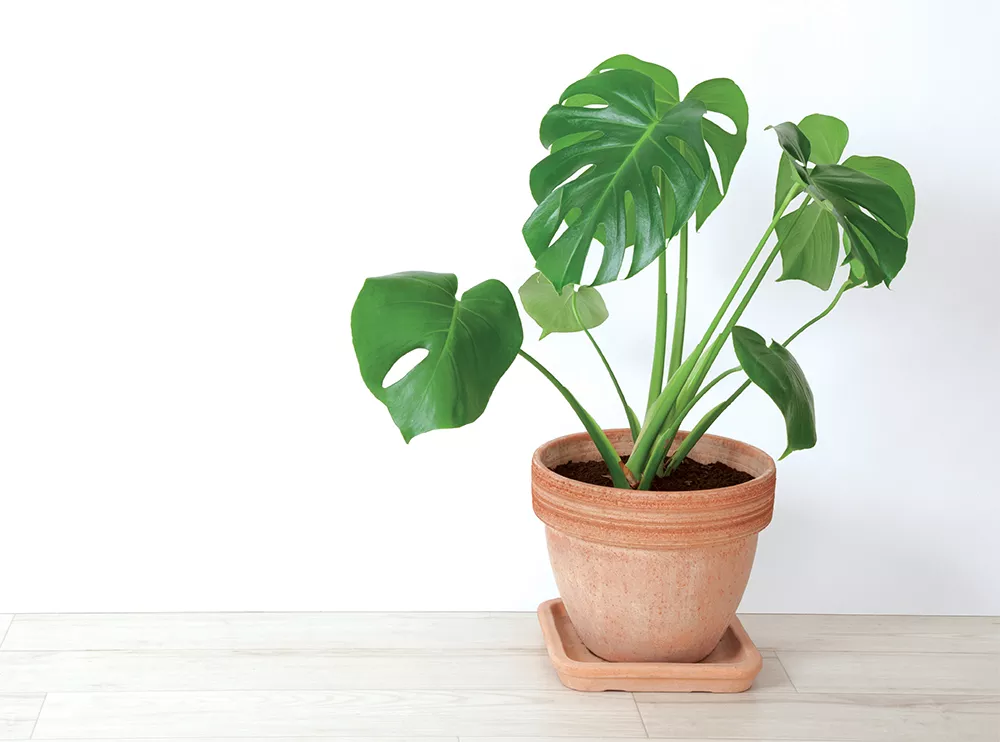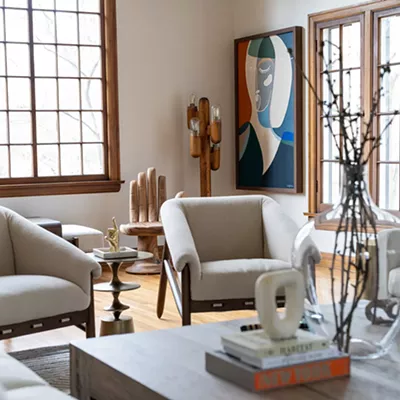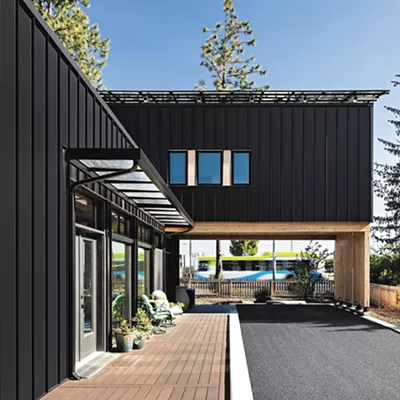Have a space that needs some help? Looking to fill up an empty corner or add interest to a blank wall, but finding that your taste in art is a little beyond your current budget? Indoor plants may offer a lively solution to a number of common decorating dilemmas.
Plants are "kind of like a piece of art," says Pepper Ballien, who designs and maintains indoor plantscapes through Spokane's Interior Garden, which serves mostly commercial clients in Eastern and Central Washington, North Idaho and parts of Montana.
"Plants soften decor," says Ballien, because leaf shapes are not only irregular, but also change over time. With the help of a soft breeze, plants add movement and leaves reflect light and create interesting shadows.
Tall plants or trees, as well as tall narrow planters, can add much-needed verticality in a space. Or plants can add width, like a living screen. Plants can also add color, Ballien says "and are easier to change than a wall color."
Keeping decorative plants healthy is not difficult if you spend a little time understanding what they are trying to tell you.
The most common symptom of an unhappy plant is yellowing of the leaves. Unfortunately, it is a vague complaint that can result from overwatering or underwatering, a lack of nutrients, damaged roots or a plant that's ready to be moved to a larger pot.
However, "The most common mistake is overwatering," says Asia Huska, of the Plant Farm in Spokane Valley.
Overwatering drowns plant roots and can make plants vulnerable to disease. If you find you've overdone it, try to pour off excess water, or even repot the plant in dry soil.
Better yet, say the experts, don't overwater in the first place. Pay attention to each plant's appearance, especially during the change-of-season and when changing location. Keep track of watering. If a quarter cup of water is sufficient week-to-week, but the plant seems to need more in the summer, increase watering, but slowly.
Pinching yellowed leaves and dead flowers will allow you to quickly see if new growth occurs, which means the plant's issue have been resolved.
"They're kind of like cats," says Huska. "Every one is different."
Ballien recommends fertilizing during the growing season (generally April through October). Dusting plants with a feather duster or spraying them with a mister can help keep leaves clean; dirty leaves are less efficient at absorbing light and might contribute to some pest growth. Adding a small amount of dish detergent to the mister can deter mites.
LIGHT TERMS
Plant labels often carry lighting recommendations. Here's what they mean:
Direct sun: Plant is in a south or southwest-facing room or windowsill.
Bright indirect light: Plant is within a few feet of a south, southwest, east or west-facing window
Low or partial light: Plant is in a room with strong morning sun or in front of a north-facing window
— CARRIE SCOZZARO
BEGINNER'S LUCK
Here are some easy-care plants that are guaranteed to grow for beginning indoor gardeners.
Philodendron: Requires minimal water and light to do well and is generally forgiving about changes in both.
Sansevieria (aka snake plant or devil's tongue): A hardy plant that grows up spear-like from the soil.
Pothos and spider plants: Often grown in hanging containers and are easy to propagate. That's good because if the plant's demise seems imminent, simply cut off a runner and allow it to root in water.
Rubber plant and dracaena: Freestanding and forgiving plants with leaves that thrust upward.
Air plants: The ultimate beginner's plant. Air plants grow without soil or water.
Succulents, including cactus: Like the aloe vera pictured, they tend toward minimal care and a small footprint.
— CARRIE SCOZZARO





















